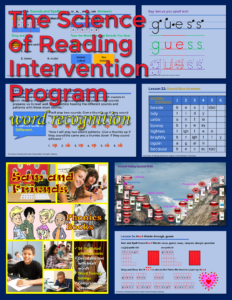Reading Skills for ELA Teachers
I recently responded to this FB post from a middle school teacher inquiring about reading skills for ELA teachers and their students. I’ve been there and asked the same question! I was teaching high school ELA and students were simply not equipped to read and write at anywhere near grade level.
Help! I have quite a few students in my grade 7 ELA class this year who can barely read and write. Our SPED teacher’s caseload is full. I only had one reading class in my teacher credential program and don’t have the faintest idea about how to teach reading. However, I don’t want to simply band-aid their issues by giving them audio files of our class novels, etc. I want to make a difference in their lives and teach them how to read.
What reading skills do I need to teach and how to I teach them? How much time will it take? I don’t know what I don’t know. Are their reading resources that don’t require extensive training? I looked into LETRS and OG training, but those are hundreds of hours and expensive, too.
Most of us have similar challenges in our ELA classes; however, you do have some extreme examples of kids who can barely read and write. You can’t send them “out” and, frankly, you shouldn’t. Why not?
The most current reading research shows the importance of language comprehension i.e., literary analysis, syntax and text structure, vocabulary/morphology, and writing. Stuff you do everyday.
But that’s not enough. Some of your kids desperately need the other side of Scarborough’s famous rope: word recognition. Phonemic awareness, phonics, spelling, and fluency practice.
As a former MS reading specialist and ELA teacher, I’ve designed a program for you to focus on that word recognition piece.
Now, it’s going to take 15-20 minutes of explicit instruction every day, so if you can’t figure out meaningful independent activities for the grade-level readers to complete each day, this program is not for you.
Also, your struggling readers and writers are going to need 15-20 minutes of practice per day in class, at home, in study hall, etc.
I designed the program with no prep and no correction. No advanced training–you train as you teach this scripted program. The program is for secondary ELA teachers, not reading specialists, and their students. For example, the decodable booklets feature teenage characters and plots with comic illustrations.
Here’s the resource with both print and Google slide options. If you can’t get your principal to purchase, email me and I’ll get your students this program. You can preview the entire program. https://penningtonpublishing.com/products/the-science-of-reading-intervention-program-1
Not sure if the program will match the specific needs of your struggling students? Administer the free vowel sounds phonics assessment, diagnostic spelling assessment, and the individual reading fluency assessment here: https://blog.penningtonpublishing.com/reading/pennington-publishing-elareading-assessments/
*****
Mark Pennington is a former ELA teacher at the middle school, high school, and community college levels. Mark is also an MA reading specialist and author of many fine Pennington Publishing programs.
